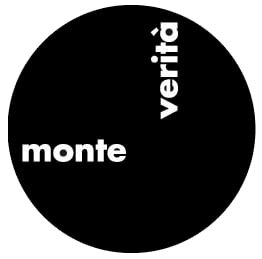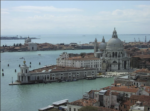Miki Tallone – Laban’s Training Area / 2010-13

Nella suggestiva cornice di Monte Verità, Laban’s Training Area è presentata inizialmente nella sua totalità e successivamente suddivisa in cinque frammenti sparsi nel verde, aprendo nuove suggestive possibilità espressive.
Comunicato stampa
The historic relationship between art and movement – a combination that finds its origins in the late 1950s-early 1960s, when pioneers such as Lygia Clark, Robert Morris, and Yvonne Rainer started investigating the role of the spectator in connection to the behavioural code dictated by a work of art – has further ground for reflection in Miki Tallone’s sculpture Laban’s Training Area (2010-13).
Exhibited in a different variant on the occasion of ‘Art en plein air’ in Môtiers (2011), the piece is inspired by the choreographic methodology invented by the late artist, scientist and philosopher Rudolf Laban, and introduces a geometrical structure based on an icosahedric translation of the act of dance.
In the picturesque setting of Monte Verità, Laban’s Training Area is featured in two different modes – first in its entirety, and subsequently fragmented into five segments scattered around the woods. This second arrangement automatically opens up a new set of possibilities, triggering a process of physical and psychological participation in the audience designed to question the human body, its movements, the sensorial perception of the sculpture itself, and its existence as autonomous, inaccessible entity.
By making a subtle reference to the now popular practice of installing ‘fitness itineraries’ inside public gardens, Laban’s Training Area emphasizes the contradictions of having artificial elements inserted in a natural environment to improve health, and the mechanisms that regulate the body activities of those who use them. Even the most liberating gesture is characterised by a form of voluntary submission – a concept that in Tallone’s sculpture is made particularly seductive, and to a certain degree mischievous, when presented next to an innocuous sign displaying apparently obscure instructions fully comprehensible only for those familiar with Laban’s theories. The authority of Laban’s Training Area is nevertheless eroded by its deconstruction – a process that has the merit of focusing the attention of the viewer on other aspects, like the composition of the piece and the quality of the materials adopted (as for example the reflection caused by the tubes in stainless steel), and that ultimately indicates the vulnerability intrinsic to any structure no matter how perfect the mathematical formula that generated it is. In line with Laban’s ideas, Tallone’s invitation to participate to the perceptive experience of her work in six steps creates a narrative that rationalises the idea of movement, exploring at the same time the circle that comprises its conception, application, and consequences.
Michele Robecchi
Michele Robecchi is a writer, based in London, where he is an editor at Phaidon Press.
Per l'occasione un multiplo in edizione di 120 esemplari firmati e numerati da Miki Tallone verrà presentato con un testo critico di Michele Robecchi.
Miki Tallone — Laban’s Training Area / 2010-13
La storica relazione tra arte e movimento – un binomio che trova le sue radici negli anni CinquantaSessanta, quando pionieri come Lygia Clark, Robert Morris, e Yvonne Rainer avviarono una serie di ragionamenti sul ruolo dello spettatore in rapporto all’opera d’arte come presenza in grado di dettare un codice comportamentale – trova ulteriori spunti di riflessione con Laban’s Training Area di Miki Tallone. Esposta in una prima versione nella rassegna “Art en plein air” a Môtiers nel 2011, la scultura fa riferimento alla metodologia coreografica pensata da Rudolf Laban, riproponendo in chiave geometrica l’architettura icosaedrica entro cui è possibile prepararsi alla danza secondo il grande artista, scienziato e teorico europeo.
Nella suggestiva cornice di Monte Verità, Laban’s Training Area è presentata inizialmente nella sua totalità e successivamente suddivisa in cinque frammenti sparsi nel verde, aprendo nuove suggestive possibilità espressive, e soprattutto innescando nel pubblico un processo di partecipazione fisica e mentale destinato a mettere in discussione il corpo, i suoi movimenti, la percezione sensoriale della scultura stessa e la sua esistenza in quanto forma autonoma e impenetrabile.
Facendo sottilmente riferimento alla pratica salutistica ormai diffusa del “percorso vita”, Laban’s Training Area evidenzia le contraddizioni che scaturiscono dall’inserimento di elementi artificiali all’interno di un contesto naturale, e soprattutto dei meccanismi che regolamentano l’attività motoria di chi ne usufruisce. Esiste sempre, in sostanza, una forma di sottomissione volontaria anche nel gesto più liberatorio, un concetto che si manifesta in maniera ancora più seducente e mistificatoria se proposto accanto a istruzioni apparentemente astratte ma in realtà decifrabili per chi è familiare con le teorie di Laban. Questa autorità è tuttavia erosa dalla decostruzione dell’opera, un procedimento che, oltre ad esaltarne gli aspetti compositivi e materici – come ad esempio l’effetto riflettente provocato dall’impiego di acciaio inox – serve ad indicare la vulnerabilità inerente a una qualsiasi struttura nonostante la perfezione della formula matematica che la determina. In linea con il pensiero di Laban, l’invito di Tallone ad aderire all’esperienza percettiva del suo lavoro seguendo i sei passaggi che ha concepito, genera una narrazione che cerca di razionalizzare il movimento, esplorando la trama circolare che lega la sua concezione, il suo svolgimento, e le sue conseguenze.
Michele Robecchi
Michele Robecchi vive a Londra, dove lavora come critico d’arte e dirige una collana di monografie per la Phaidon Press.



